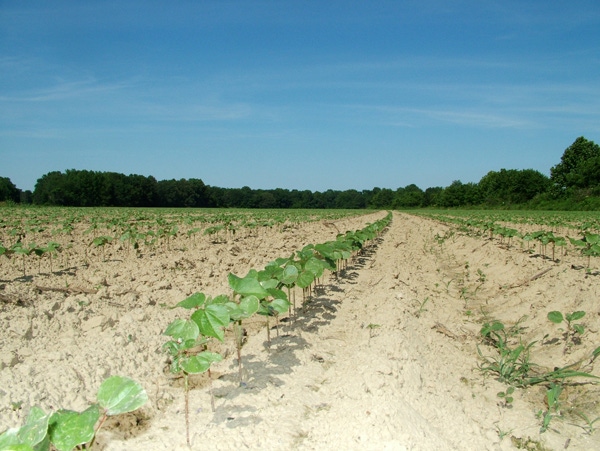April 21, 2011

Although subsoil moisture is available in most of the Texas Gulf Coast region, the surface has dried so rapidly that plant stands were adversely affected, especially in fields that were planted on later dates. No rain was received to correct that situation.
Furthermore, additional crop planting had to be suspended since seed beds were drying before germination and rooting of seedlings could take place. Needless to say we need rain.
We are seeing one insect that may become a problem on multiple crops—the false chinch bug (or a near related species). It is likely to be more abundant on field margins near weeds, such as in ditches and along turn rows because they are moving from the weeds to cultivated crop plants.
Killing these weeds with herbicide or shredding causes the false chinch bug to migrate as nymphs and adults to living plants. It should be possible to treat field margins for the insect unless the field itself supports weeds that harbor the false chinch bug. The insects are usually found in large numbers running all over the plant and surrounding soil. All stages and sizes of the false chinch bug are present on the weeds at this time.
We are also aware of concerns over the number of aphids and spider mites in pre-squaring cotton fields along the Gulf Coast. One should be cautious about making a decision to treat for either of these pests at this stage of growth.
In the case of cotton aphid,predators are beginning to build and aphid “mummies” (parasitized aphids) are just beginning to appear.
Spider mite
For spider miteit’s a bit more difficult to decide what to do as there are no real economic treatment thresholds established for spider mites at this stage of plant development. I have observed spider mites on pre-squaring cotton over the years where little yield impact was observed even under extended dry conditions. However, we finally got enough rain to cause decrease in spider mite numbers. In general, I think it wise to see sustained heavy mite buildup before treatments are considered.
Many cotton fields are just starting to produce squares; therefore, cotton fleahopperscouting should intensify.
Some growers have wondered if the treatment threshold should be lowered because of the cotton price; the answer to that question is “no,” The interaction of plant fruiting and the fleahopper make it such that treatments should be made as fleahopper numbers begin to exceed 10 per 100 plants and approach 15 per100 plants—especially by the second week of squaring.
There are signs, at least in the Corpus Christi area, that fleahopper buildup in cotton may not be as high and will probably be delayed compared to 2010.
Unlike the case with early season aphids and spider mites, the fleahopper is more often a real yield reducer and should be addressed by chemical control where appropriate through the first week of bloom. Results from a field study last season show that although we could not demonstrate a statistical increase in yield (probably caused by variation due to a spindle picker problem) it seems obvious to me that the increased yield was a result of fleahopper control.
You May Also Like




